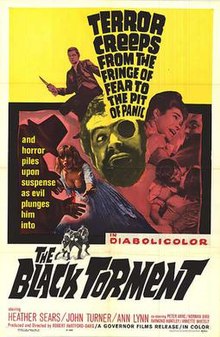
Anne of the Thousand Days is a 1969 British historical drama film based on the life of Anne Boleyn, directed by Charles Jarrott and produced by Hal B. Wallis. The screenplay by Bridget Boland and John Hale is an adaptation of the 1948 play of the same name by Maxwell Anderson.
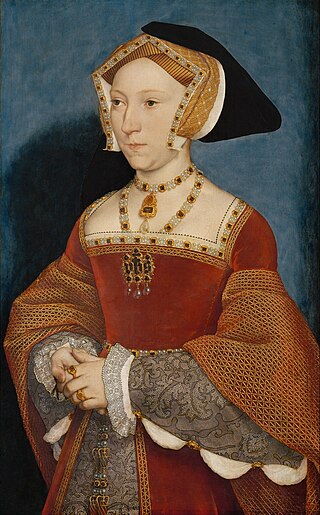
Jane Seymour was Queen of England as the third wife of King Henry VIII from their marriage on 30 May 1536 until her death the next year. She became queen following the execution of Henry's second wife, Anne Boleyn, who was accused by King Henry VIII of adultery after failing to produce the male heir he so desperately desired. Jane, however, died of postnatal complications less than two weeks after the birth of her only child, the future King Edward VI. She was the only wife of Henry to receive a queen's funeral; and he was later buried alongside her remains in St George's Chapel, Windsor Castle.

Dame Margaret Taylor Rutherford, was an English actress of stage, television and film.

Richard III is a play by William Shakespeare. It was probably written c. 1592–1594. It is labelled a history in the First Folio, and is usually considered one, but it is sometimes called a tragedy, as in the quarto edition. Richard III concludes Shakespeare's first tetralogy and depicts the Machiavellian rise to power and subsequent short reign of King Richard III of England.

Charles Seymour, 6th Duke of Somerset, known by the epithet "The Proud Duke", was an English aristocrat and courtier. He rebuilt Petworth House in Sussex, the ancient Percy seat inherited from his wife, in the palatial form which survives today. According to the Encyclopædia Britannica Eleventh Edition, he was a remarkably handsome man, and inordinately fond of taking a conspicuous part in court ceremonial; his vanity, which earned him the sobriquet of "the proud duke", was a byword among his contemporaries and was the subject of numerous anecdotes; Macaulay described him as "a man in whom the pride of birth and rank amounted almost to a disease".

Elizabeth Seymour was a younger daughter of Sir John Seymour of Wulfhall, Wiltshire and Margery Wentworth. Elizabeth and her sister Jane served in the household of Anne Boleyn, the second wife of Henry VIII. The Seymours rose to prominence after the king's attention turned to Jane. In May 1536, Anne Boleyn was accused of treason and adultery, and subsequently executed. On 30 May 1536, eleven days after Anne's execution, Henry VIII and Jane were married. Elizabeth was not included in her sister's household during her brief reign, although she would serve two of Henry VIII's later wives, Anne of Cleves and Catherine Howard. Jane died 24 October 1537, twelve days after giving birth to a healthy son, Edward VI.
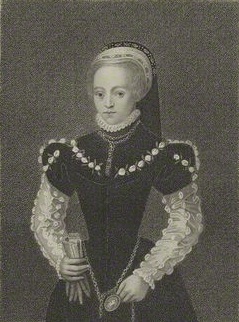
Anne Seymour, Duchess of Somerset was the second wife of Edward Seymour, 1st Duke of Somerset, who held the office of Lord Protector during the first part of the reign of their nephew King Edward VI. The Duchess was briefly the most powerful woman in England. During her husband's regency she unsuccessfully claimed precedence over the queen dowager, Catherine Parr.
Sir Simonds d'Ewes, 1st Baronet was an English antiquary and politician. He was bred for the bar, was a member of the Long Parliament and left notes on its transactions. D'Ewes took the Puritan side in the Civil War. His Journal of all the Parliaments of Elizabeth is of value; he left an Autobiography and Correspondence.
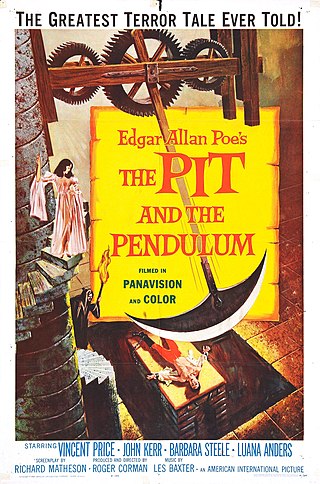
The Pit and the Pendulum is a 1961 horror film directed by Roger Corman, starring Vincent Price, Barbara Steele, John Kerr, and Luana Anders. The screenplay by Richard Matheson was loosely inspired by Edgar Allan Poe's 1842 short story of the same name. Set in sixteenth-century Spain, the story is about a young Englishman who visits a forbidding castle to investigate his sister's mysterious death. After a series of horrific revelations, apparently ghostly appearances and violent deaths, the young man becomes strapped to the titular torture device by his lunatic brother-in-law during the film's climactic sequence.
John Turner is a British television and film actor.
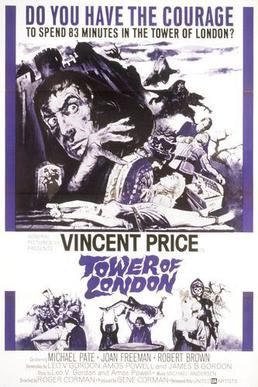
Tower of London is a 1962 historical drama and gothic horror film directed by Roger Corman and starring Vincent Price and Michael Pate. The film was produced by Edward Small Productions.
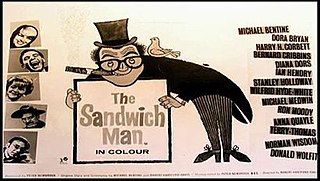
The Sandwich Man is a 1966 British comedy film directed by Robert Hartford-Davis starring Michael Bentine, with support from a cast of British character actors including Dora Bryan, Harry H. Corbett, Bernard Cribbins, Diana Dors, Norman Wisdom, Terry-Thomas and Ian Hendry. It was written by Hartford-Davis and Bentine.
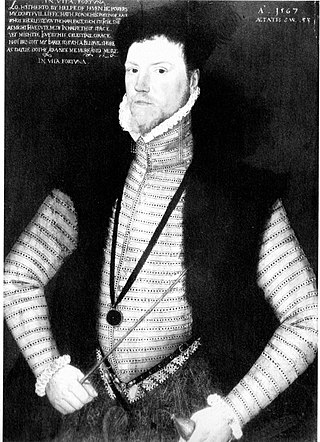
Sir Richard Knightley of Fawsley Hall in Northamptonshire was an English Member of Parliament (MP) and leading patron of the Puritans during the reign of Elizabeth I. The Knightleys were one of the leading families of Northamptonshire.
Margery Wentworth, also known as Margaret Wentworth, and as both Lady Seymour and Dame Margery Seymour, was the wife of Sir John Seymour and the mother of Queen Jane Seymour, the third wife of King Henry VIII of England. She was the grandmother of King Edward VI of England.
Edina Maria Ronay FRSA is an Anglo-Hungarian fashion designer and former actress. She is the daughter of food critic Egon Ronay and the mother of actress/writer Shebah Ronay.

Saturday Night Out is a 1964 British comedy-drama film directed by Robert Hartford-Davis and starring Heather Sears, John Bonney, Bernard Lee, Erika Remberg, Francesca Annis, Margaret Nolan and David Lodge. It is known for its portrayal of early Swinging London.
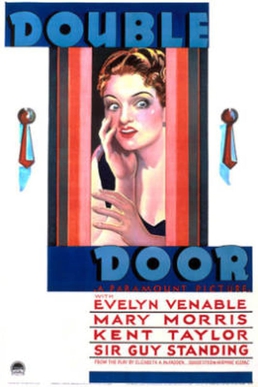
Double Door is a 1934 American pre-Code thriller film directed by Charles Vidor, written by Jack Cunningham and Gladys Lehman, and starring Evelyn Venable, Mary Morris, Anne Revere, and Kent Taylor. The film follows a young bride who finds herself tormented by her wealthy husband's abusive spinster sister in their New York City mansion. It is based on the 1933 Broadway play of the same name by Elizabeth A. McFadden and was billed in the opening credits as "The play that made Broadway gasp". Both Morris and Revere reprised their Broadway roles in the film. Though Morris had a long stage career, this is her only film performance.

Sir John Eyre (1580–1639), initially of Great Chalfield Manor, Wiltshire and later of St. Giles-in-the-Fields, Middlesex was an English courtier, ambassador and Member of Parliament.

Sarah Harington (1565–1629) was an English courtier.

The Ash Tree is a 1975 supernatural fiction short film produced by the BBC. Running at 32 minutes, it was based on the short story "The Ash-tree" by British writer M. R. James which was included in his 1904 collection Ghost Stories of an Antiquary. The story was adapted by David Rudkin as "The Ash Tree", and was part of the BBC's A Ghost Story for Christmas strand. It was first broadcast on 23 December 1975 at 11.35pm. The adaptation stars Edward Petherbridge in the dual role of Sir Richard and Sir Matthew and Barbara Ewing as the witch, Anne Mothersole. It was directed by Lawrence Gordon Clark.
